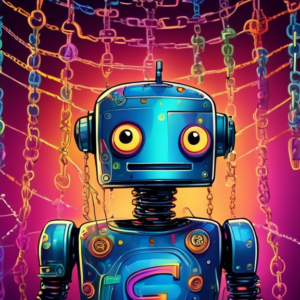ChatGPT, the artificial intelligence chatbot developed by OpenAI, has been making waves across the internet for its remarkable ability to generate human-like text, write code, and engage in complex conversations. While its capabilities have astounded many, the inner workings of this powerful AI have remained largely shrouded in mystery. However, recent leaks of ChatGPT’s internal rules and guidelines have provided unprecedented insights into how this language model is trained and what principles govern its responses.
A Glimpse Behind the Curtain: Understanding ChatGPT’s Rules
The leaked rules, which have been circulating online, offer a glimpse into the extensive efforts by OpenAI to align ChatGPT with human values and prevent misuse. These guidelines cover a wide range of topics, including:
- Content Restrictions: ChatGPT is explicitly prohibited from generating harmful or offensive content, such as hate speech, discriminatory language, and violent content. The rules outline specific categories of content that are off-limits, demonstrating OpenAI’s commitment to responsible AI development.
- Bias Mitigation: Recognizing the potential for AI to perpetuate biases present in training data, OpenAI has implemented rules to minimize bias in ChatGPT’s responses. The guidelines emphasize the importance of fairness, equity, and avoiding discriminatory outputs based on factors like race, gender, or religion.
- User Privacy: ChatGPT is prohibited from disclosing private information about individuals or OpenAI itself. This rule is crucial for protecting user data and preventing the chatbot from being used for malicious purposes like identity theft or privacy violations.
- Transparency and Disclosure: The guidelines highlight the importance of ChatGPT being transparent about its artificial nature. Users should be aware that they are interacting with an AI and not a human. This rule aims to prevent misunderstandings and promote ethical interactions.
- Avoiding Plagiarism: ChatGPT is trained on a massive dataset of text, making plagiarism a concern. The rules emphasize that the AI should generate original content and avoid directly copying existing works. This ensures that ChatGPT’s output is unique and respects intellectual property rights.
Implications for the Future of AI
The leak of ChatGPT’s rules has significant implications for the field of artificial intelligence:
- Increased Transparency and Accountability: The leak has spurred calls for greater transparency from AI developers. As AI becomes increasingly integrated into our lives, understanding the rules and guidelines that govern these systems is crucial for ensuring their responsible use.
- Ethical Considerations: The rules highlight the ethical dilemmas inherent in developing powerful AI systems. Balancing innovation with responsibility requires careful consideration of potential biases, unintended consequences, and the need for clear guidelines.
- The Evolving Nature of AI: ChatGPT’s rules are not static but rather an evolving set of guidelines. As AI technology advances and new challenges arise, developers will need to adapt these rules to mitigate emerging risks and ensure alignment with human values.
A Deeper Dive into Specific Rules
To understand the depth and complexity of ChatGPT’s internal guidelines, let’s examine some specific examples:
Rule: Do Not Express Personal Opinions or Beliefs
ChatGPT is designed to provide information and complete tasks, not to express subjective viewpoints. This rule prevents the AI from being perceived as sentient or conscious, while also avoiding the spread of misinformation or biased opinions.
Rule: Do Not Engage in Emotional Responses
While ChatGPT can understand and process human emotions, it is not programmed to reciprocate them. This rule prevents the chatbot from forming inappropriate bonds with users or exhibiting manipulative behavior.
Rule: Do Not Claim to be Used in Google Products
This rule reflects the competitive landscape of the tech industry and aims to prevent confusion about ChatGPT’s affiliations. It underscores the importance of transparency and accurate representation in AI development.
The Future of ChatGPT and AI Regulation
The leak of ChatGPT’s rules has ignited discussions about the need for more comprehensive regulation of AI. As these technologies become increasingly sophisticated, governments and regulatory bodies face the challenge of establishing clear guidelines that foster innovation while mitigating potential risks.
Some experts argue that self-regulation by AI developers is insufficient, emphasizing the need for external oversight to ensure ethical development and deployment. Others advocate for a collaborative approach, with industry leaders working alongside policymakers to create flexible frameworks that can adapt to the rapid pace of AI advancement.
Conclusion
The leaked ChatGPT rules provide a fascinating glimpse into the complexities of building ethical and responsible AI systems. While these guidelines represent a significant step towards mitigating potential harms, they also underscore the ongoing challenges and ethical dilemmas inherent in AI development. As AI continues to evolve, transparency, accountability, and ongoing dialogue will be crucial for shaping a future where these powerful technologies are used for good.
